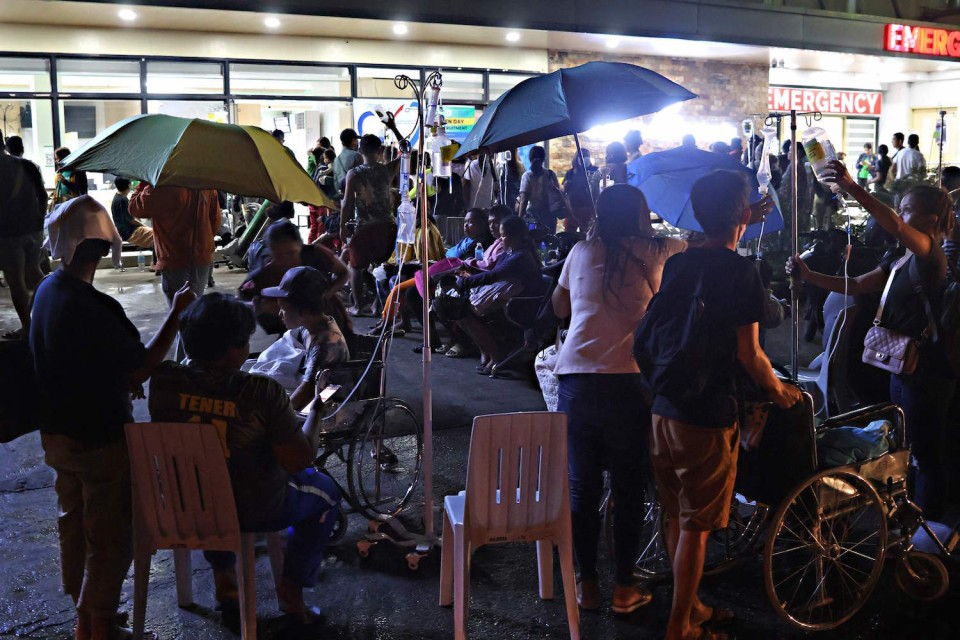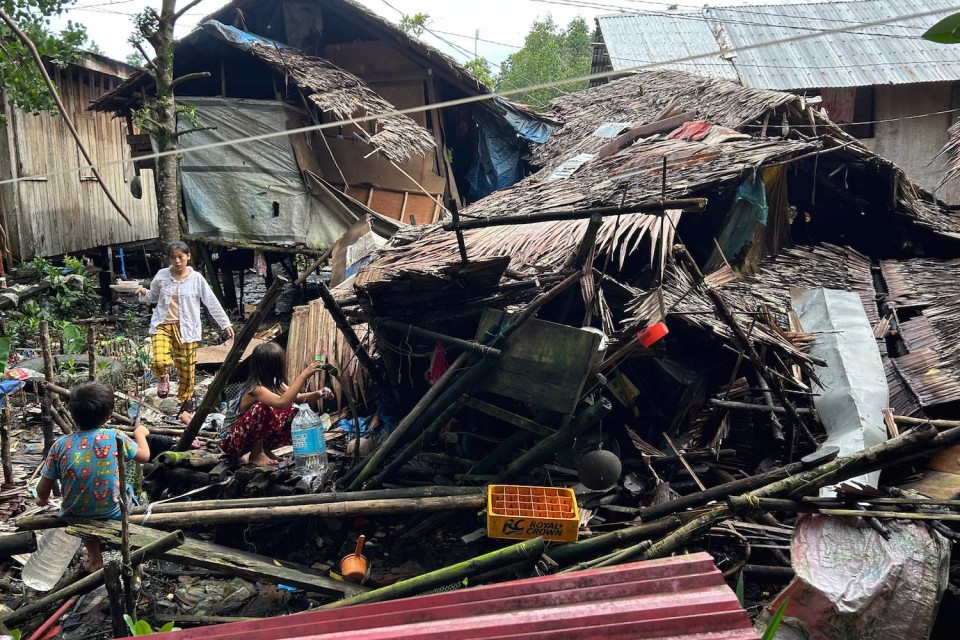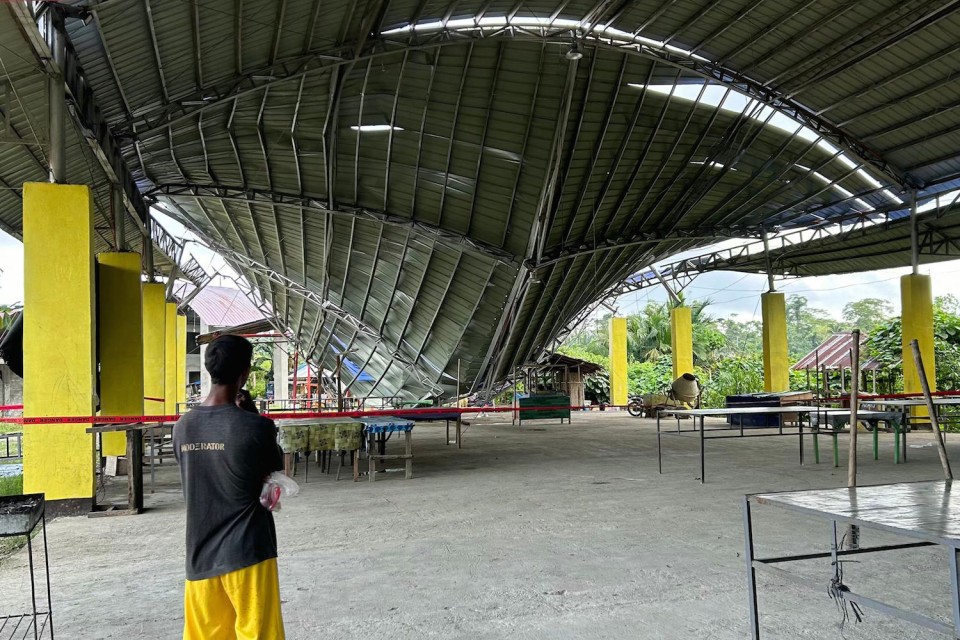

By Ara Eugenio and Cecil Morella
MANILA, Dec 3, 2023 (AFP) – A magnitude 6.6 earthquake hit the southern Philippines on Sunday, the US Geological Survey said, a day after an even more powerful quake in the same region killed two people and triggered a tsunami alert.
The latest earthquake — one of several strong aftershocks felt in the region since late Saturday — hit at around 6:36 pm (1036 GMT) at a depth of 56 kilometres (35 miles) northeast of Hinatuan municipality on Mindanao island.
It was the same area where residents had fled to higher ground the night before following a magnitude 7.6 quake.
At least two people were killed and several were injured after that quake, authorities said. It was followed by five major aftershocks of magnitudes exceeding 6.0 through Sunday, according to the USGS.
Hinatuan police Staff Sergeant Joseph Lambo said Sunday evening’s quake sent people rushing out of their homes again.
“They were panicking due to the memory of the previous night’s quake,” Lambo told AFP.
He said police were checking for any further damage or casualties.
Saturday’s quake triggered tsunami warnings across the Pacific region and sent residents along the east coast of Mindanao fleeing buildings, evacuating a hospital and seeking higher ground.

– Collapsed wall –
There have been no reports of major damage to buildings or infrastructure so far, disaster officials told AFP earlier on Sunday.
A 30-year-old man died in Bislig City, in Surigao del Sur province, when a wall inside his house collapsed on top of him, said local disaster official Pacifica Pedraverde.
Some roads in the city were cracked during the earthquake and aftershocks but vehicles could still drive on them, she said.
A pregnant woman was killed in Tagum city in Davao del Norte province, the national disaster agency said, without providing details.
Two people suffered minor injuries from falling debris in Tandag City, about 100 kilometres north of Bislig, an official said.
The national disaster agency recorded a total of four people injured, but it was not clear if that tally included the two in Tandag.
The Philippine seismology institute initially warned of a “destructive tsunami” after the first quake that was expected to cause “life threatening” waves.
It issued a bulletin at 3:23 am local time that the highest waves generated were 64 centimetres (25 inches) tall on Mawes Island but also said the tsunami warning had ended.
Small swells were reported as far away as Japan’s eastern Pacific coast, where a tsunami warning was also briefly in effect. Palau, a western Pacific archipelago located about 900 kilometres (560 miles) off Mindanao, reported no impact.
The earthquake came nearly two weeks after a 6.7 magnitude quake hit Mindanao, killing at least nine people, shaking buildings and causing part of a shopping mall ceiling to collapse.
Quakes are a daily occurrence in the Philippines, which sits along the Pacific “Ring of Fire”, an arc of intense seismic and volcanic activity that stretches from Japan through Southeast Asia and across the Pacific basin.
Most are too weak to be felt by humans.







